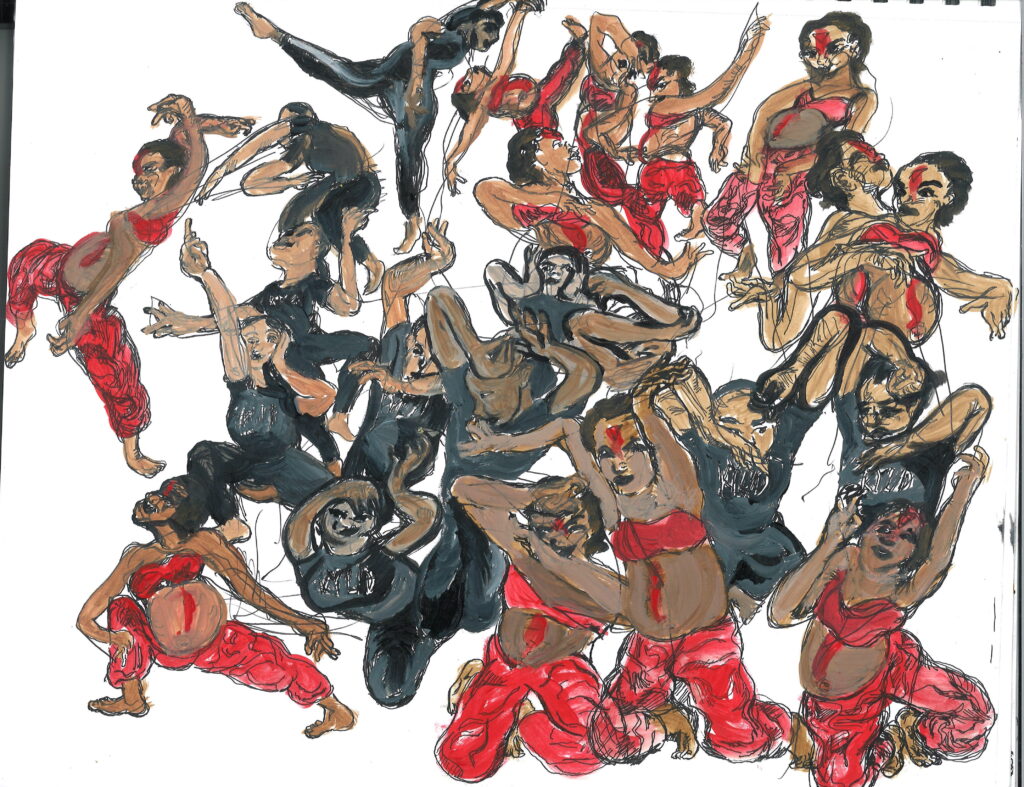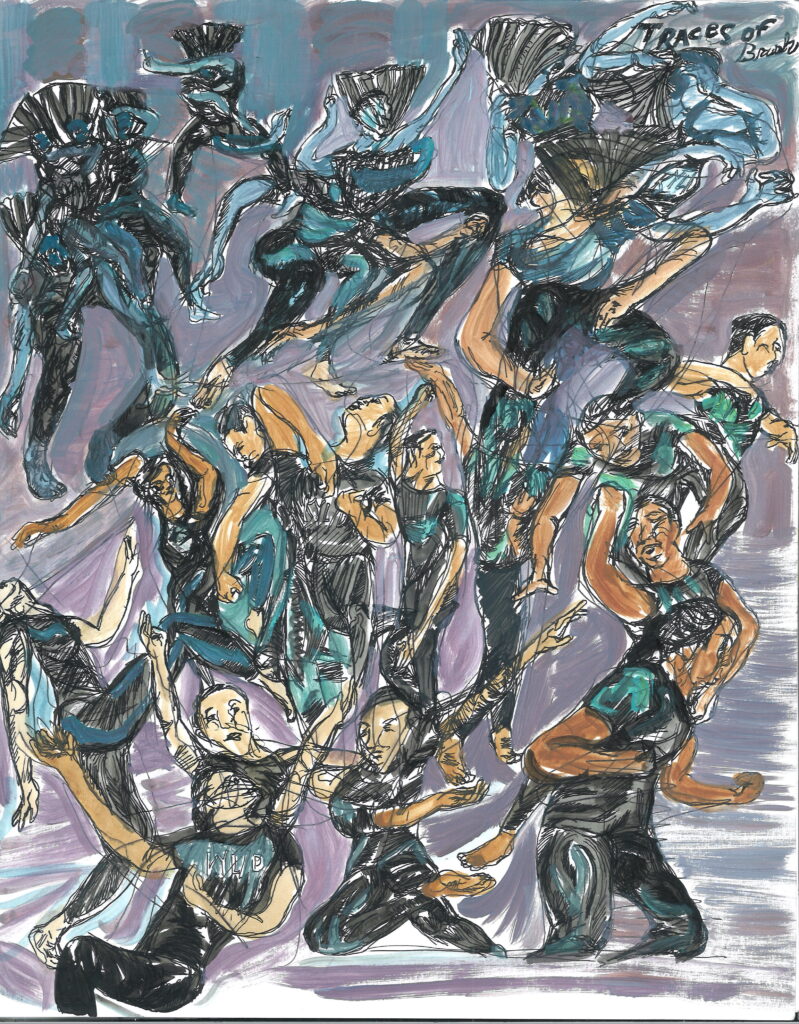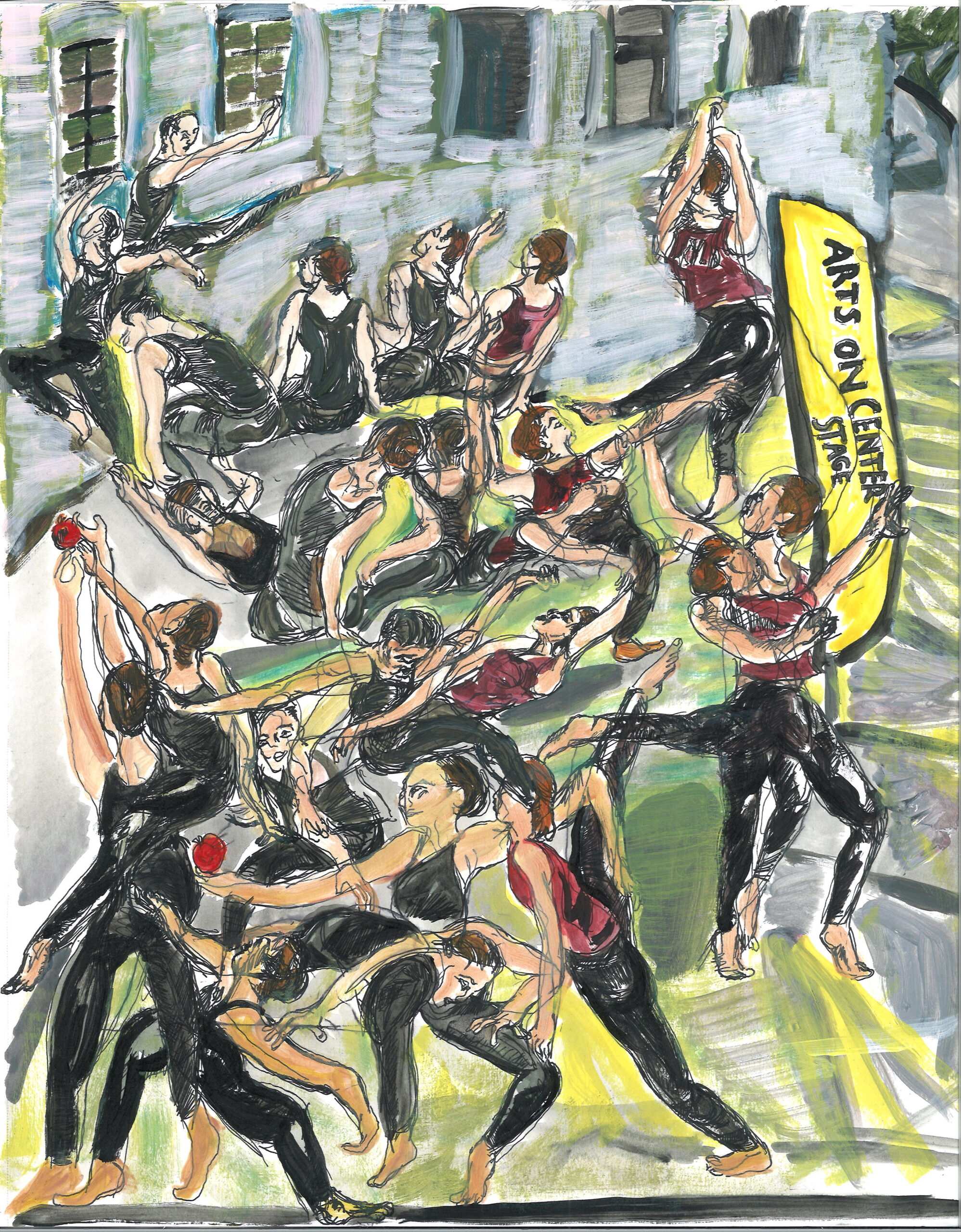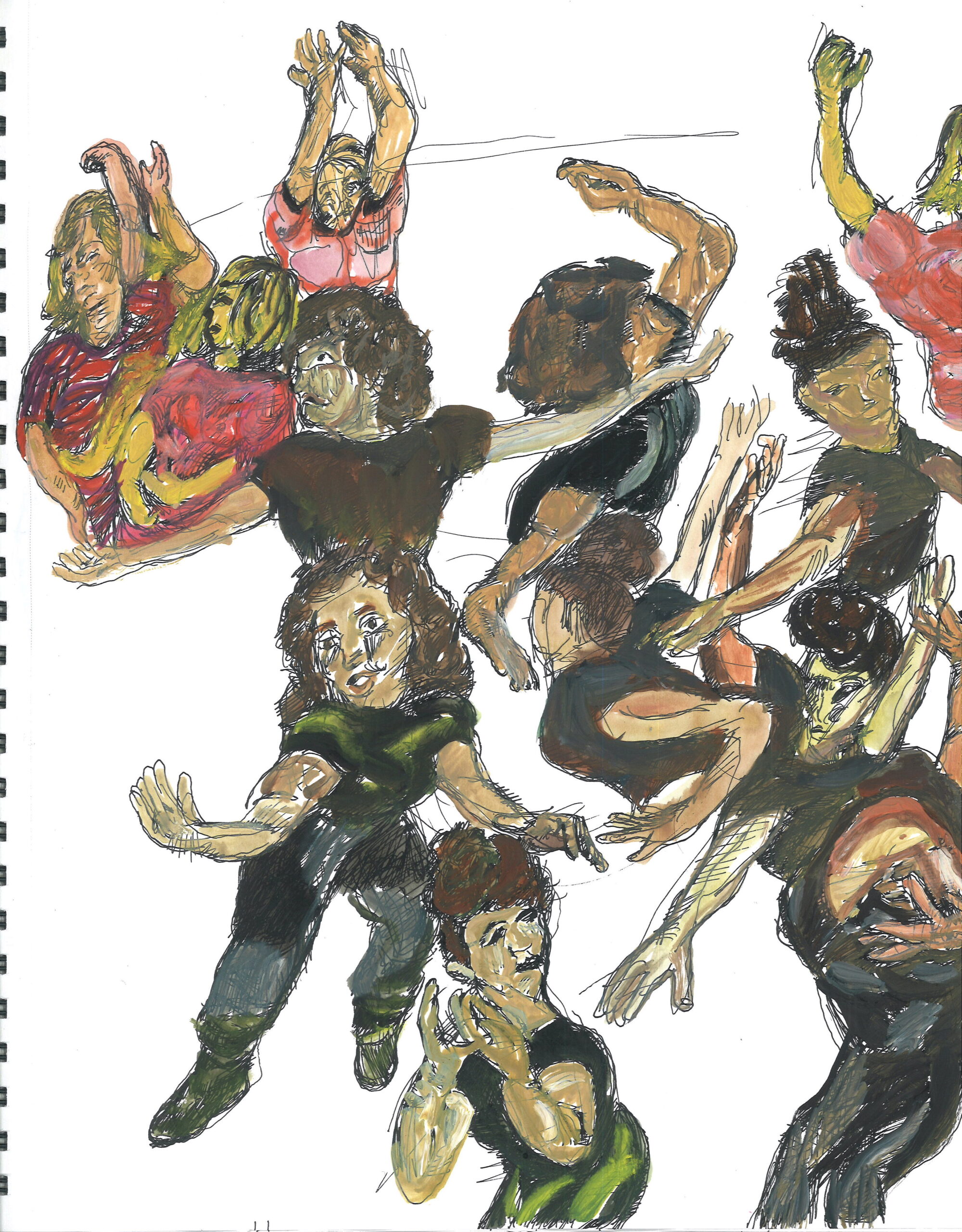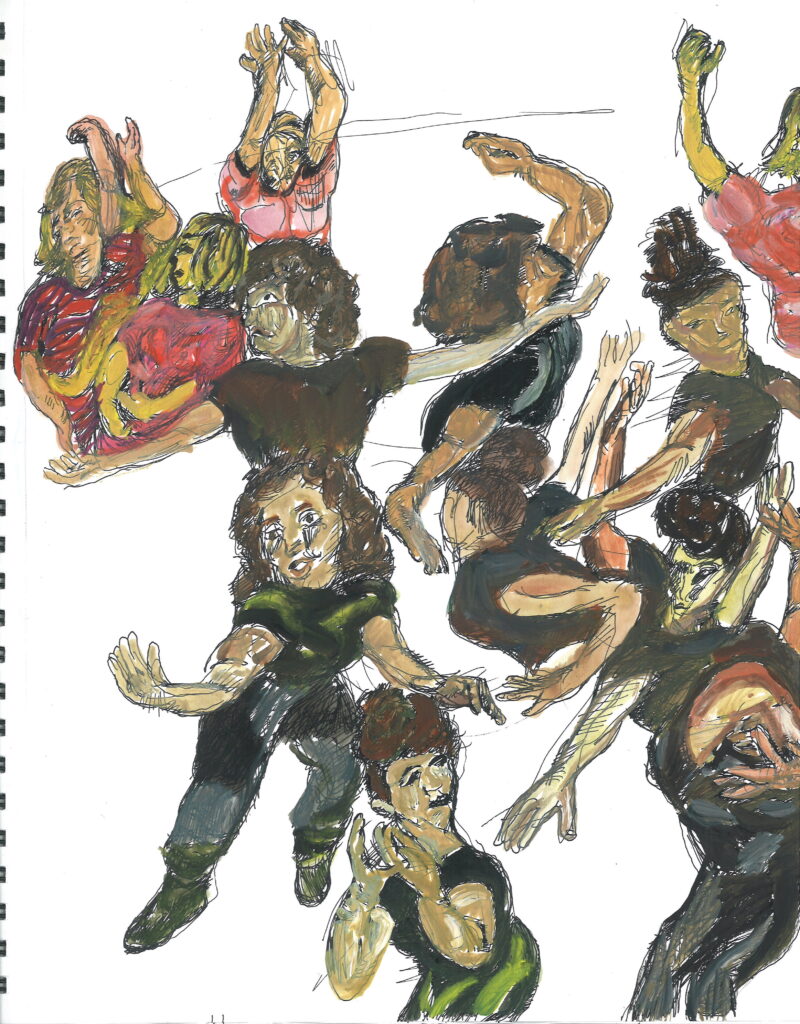Theatre Exile
The Motherfucker With The Hat (2022)
Tom Stoppard’s DADA performance, “Travesties” brings together an epoch of art, literature, and bafoonery to the Lantern Theater 22/23 season.






Theater INTERACT
Human Rites
In 2018 this new play written by Seth Rozin, was a turbulent discussion between moral practices within academia, and personal belief on an ancient tribal ritual.
Lynnette R. Freeman plays a grad student that gets in the middle of an intense discussion on the practices of a certain group of people in Mali, initiating women into womanhood by female circumcision. Joe Guzmán plays the characteristic liberal professor with pressing charisma to entertain the argument. Kimberly S. Fairbanks, playing the dean of the school insinuates how inappropriate his research touches upon the culture of black women.


BlackStar Film Festival Staff Portrait 2022
Philadelphia Theater Company- Garbologists
What are we looking at here are standards of character, or a dialogue that makes this play especially helpful. The unorthodox theme of waste management sanitary workers, initially draws us in as a genre scene, and the potential of something interfering with this presumably minimal background. Who are these people, and what brings these two together?
Who is really driving the conversation? The audience more so answers for themselves what really matters. In the sense that, classism and prejudices, unexamined labels for the likes of falling into unfashionable trends becomes a realist play of human behaviors. The audiences’ critique of character is also a critique on the audience, as much responsibility is in the hands of those opinions than the fabrication of a natural plot line. The theater’s politics turns the tables on the Theater Philadelphia Suzanne Roberts auditorium, and the classical theatrical form, philosophical investigation, and the actor in politics becomes very real.
Theatre Exile
The Motherfucker With The Hat (2022)




The African Desperate
by Martine Syms
BlackStar Film Festival

The Blackstar Film Festival staff stand for a beacon of light for Art Institutions in Philadelphia. The community of various arts institutions and organizations have a joint mission in Philadelphia and throughout the global art scene. The new found realization of course comes from a world of activism, and systems intended to serve diverse communities. Through understanding and acknowledgement to these practices unforeseen in cultural backgrounds that have, like folk artists from centennials, or large amusement like displays of cultures from the 20th century, we are now seeing changes to organization’s missions, and specifically the literature in the distribution of power within the institutions.
A growing and exciting movement follows in art where the representation and invitation to have a voice becomes even louder and cohorting better support for societal change. For example, the BlackStar Film Festival in Philadelphia took the auteur lens of artists of color to advocate for a multicultural perspective in cinema, short films, and documentary features.

“The African Desperate” by Martyne Syms
The film, “The African Desperate,” was released in select cinema’s for a special tour with Martine Syms and cast, producer Vic Brooks joined in at the post talks. The scene is very nostalgic with this striking cinematography about the black artist traversing visual art studies through the landscape of upstate New York University. The landscape and architecture is a reminder for the universal and a diaspora of ancestral hardship.
For those of similar fellowship to, the MFA candidate, in the film, that experience and experimentation with art, expression, critics, testing friendships, recreational drugs, and romance. The University lifestyle in a feature film that encapsulated black artist complacent to their environment as the recognizable character as, ‘PALACE BRYANT’ played by Diamond Stingily,.
From New York MOMA, Lincoln Center Films, Philadelphia Blackstar Film Festival and Melbourne Film Festival, Brooklyn Academy of Music and Quad Cinema N.Y, L.A at Laemmle Theatres, and the Film Center in Chicago, these are the stops along the triumphant release until MUBI releases the film worldwide. The epic day trip into the double consciousness of Palace is an average day I suppose for the creative spirited, yet exhausted black feminine. That is, after all the W.E.B Du Bois definition for the minority body bereft of fully being in contemporary life, experience from inherited abuse, and this internal conflict projected on the consciousness of black youth, is called ‘double consciousness’. The African Desperate shows how the racial tension unconfronted becomes a sublimated message metaphor and taboo; a justly objection to the causality of abuse to black and indigenous cultures.
The close-up camera shots, the wide angles, and stretched out perspectives, and overexposed light prisms align with illuminating sounds; all too ordinary in capturing the art school life under a naive lens. The tight group of friends, in this region of New York State, shows how modern art, community, and life for them has formed new relationships armored to an effectively vulnerable past through kinship. Yet as we all know the inclusive environment of institutionalized education secluded, separate from the wild social complexes that surround them beats to a different drum outside their reality. “The Dead Sisters,” a taped message on the back of Palace’s long-sleeve shirt addresses the kind of connection between the girls in this environment. The clever yet stark humor that usually springs from a diverse group of students.
The last day of University, “The African Desperate,” spins off with a final critique, it sets the fondness of a small social circle, and the ridicule that might encircle the racial bias of an artist of color. “ Can we talk about the work, and not make me the work.” says Palace to the four critics. Quick sneer expressions, blank stares, and just awkward postures begins the feeling that this would continue on throughout the film. Outside Palace, under the guise of sunglasses, and dead-ass expressionless bleakness that breaks the tension.
The face of resistance is an expression that has the power to say the unspeakable. The fashion of the film of course, the pinnacle hairstyle of Palace for our generation is this reddish orange dye that comfortably reconstitutes the color of African American hair, and skin health.
La femme fatal of this story becomes witness and victim to the strange dealings of the landscape we became familiar with, but now with a taste of nightlife that leads our Palace into this startling dimmed light, and audiences should perceive the unwilling situation of doubeness with night and day reality.
The dualistic extremes for Palace becomes the realization of destructive external pressures. On a happy note, the inclusion and permeability of artwork by colored artists in the social sphere through larger institutions. Withstanding the persuasion of her classmates to stay, and take part in festivities that seem to grow into this kind of bacchanal. Fore mentioned are Palace’s desire to avoid this ritualistic happening. In the time of graduating from Master of Fine Art and social expectations where chasms of beauty, belonging, and sex pull our experiences in undesirable ways. The sexual entendres of digital communication on our video camera, or social media permits anybody to having this avatar, and Palace even vocalizes this “sex goddess”, with her bestie Hannah, when they reveal intimate experiences. The avatar is this image within an image, a screen over reality, and technological glyches such as this are Syms way of playing with the identity and representation of minority bodies in her art practices. The lighting of night and day deconstructs those structures by capturing neon, blacklight, and high aperture light drawing.


Featured World Premiere #BlackStar10
Eyes on the Prize: Hallowed Ground by Sophia Nalhi Allison



BlackStar is the alternative space Philly artists can expect to see a real hub for the next generation of filmmakers. It is a space to hear the voice of artists that have a real life perspective on things that matter to them. A reality for some black and brown community neighborhoods that were directly affected in the history of North Philadelphia. There are these young filmmakers, like Ephaim Asili, the creator of “The Inheritance”, filmmakers who directed experimental films, shorts, or documentaries in half-factual and non-fictional plot structures. They build on the history with contemporary feelings toward a struggle, and permeate with uncommon facts about an event or real-life experience. BlackStar is a space to create a Afrofuturistic pictures, immigrant journeys, and indigenous people who have lived, and experienced life unlike how it has been told to us through history books.

It is a real privilege to be able to contribute to this organization, and to talk about the scenes it manifests right here in Philadelphia. Panning the work of artists as well as festival goers, the multicultural tableau put forth the festival atmosphere to experience the talent and drive for the black and brown peoples’ creative networks. It speaks specifically to Philadelphia because of a housing infrastructure which witnessed discriminatory practices. This creative field reevaluates the risk of investment in Philadelphia. Channeling the media everywhere you look makes you choose sides, from the Metropolitan Museum of Art to the politics effective immediately in newsrooms, in the streets across America, and just released blockbusters like Candyman, 2021, directed by Nia DaCosta. Taking a look at the urban design in Philadelphia we can recognize the leadership of Alex Paey with Ones-Up, a community service building up the youth in North Philly. He talks about serving diversity. In an interview from 2017, Paey, the entrepreneur activist briefly comments on the housing association’s segregation in Philadelphia neighborhoods, and how disinvested African American and immigrant neighborhoods in Philly fell to urban decay. Nextcity.org is publishing relatable stories by their mission to bring more equitable cities through the power of journalism.
The population of urban landscapes are a mix of millions of people all settling down in one place. In that, we have the world’s artists, creative producers, and all the talented people that live here, in cities around the world in hope to contribute to the cultural diversity. Trusted by our curiosity for how population numbers matter and how equity in the world pulses, breaths, and communicates across cultures. There are 1.579 million people in Philadelphia, there are 8.491 million people in New York City, and there are 13.96 million People in Tokyo. How does this alter the way we see an alternative platform for cinema, art, or other businesses? The answer is in the organization of stories produced by a population. The population generates outcomes that will benefit each race and gender, or belief system. As an example, the Philadelphia Dance Company, known as Philadanco tackled this gap in serving diversity through dance that allowed for other Black-led companies to join in the first International Conference for Black Dance Companies. Choosing to cover BlackStar without any expectations, I was drawing from years of theater and dance in Philadelphia, and I tackled topics at the surface of philosophy, religion, early civilization, and history. BlackStar takes a big step in designing, organizing, and reaching more adaptable scenarios for black leads in motion pictures.
“The Inheritance,” directed by Ephaim Asili, is one film that takes place entirely inside an interior, even as far as personal growth and self discovery. It is concerned also with internalizing through the ancestral collective of things connected to their African diasporic roots.
A series of stills from the film captured an assortment of these things to tell the story. A medium close-up on Gwen, played by Nozipho Mclean, and Julian, played by Ephaim Asili, together in bed, the room is dark with ultramarine blue bed sheets, and the books in their hands speak justice for the experimental documentary feature. An incredibly intimate moment to tell the truth; it is the meaning of things we hold onto for names’ sake. Just, exactly what kind of bedtime story do we tell ourselves before bed to soothe our minds is also symbolic here. Julian is reading a book by Angela Y. Davis called, “Freedom Is A Constant Struggle: Ferguson, Palestine, and the Foundations of A Movement.”

In an interview with Ephaim Asili published by The Inquirer from March 2020, the educational aspect of Asili’s art and media visualizes Henry Hampton’s beliefs in the most beautiful photographic cinema. This year’s Blackstar10 closed with the new adaptation of “Eyes on the Prize: Hallowed Ground”, directed by Sophia Nahli Allison.
Americans and to others as producers and writers, creative and management talent. They will bring their own stories and passions that will, after experimentation, failures and second opportunities, succeed. …
-Henry Hampton’s 1992 PBS Annual Meeting Keynote Speech
In recovering the audience’s trust Hampton spoke about one insurrection in early colonial white America, a white-led rebellion rising up against an unjust tax. Leaning into the practice of event programming there is a responsibility for public broadcasting to show the stories of other perspectives. Finally, stories which embody the means to an end, by seeing causes and effects, and media that could detail the movement to a more multicultural history.

